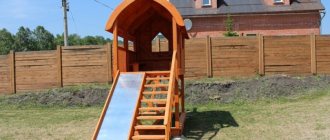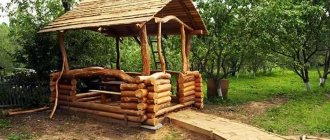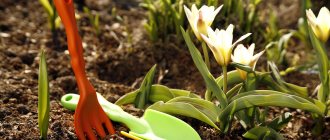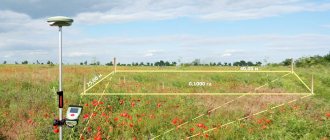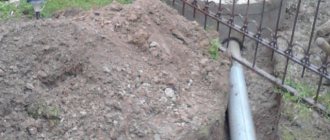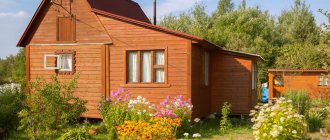While it may seem like winter is a period of rest for both plants and gardeners, we still have a lot of work to do. Snow, a little sun and cold temperatures can have a big impact on garden flora, so you need to look after them properly. What work needs to be done in the garden in winter so that you can enjoy its beauty in spring?
The main responsibilities for caring for a garden in winter are primarily control and preventive measures aimed at protecting plants from the harmful effects of low temperatures and other adverse weather conditions.
So, the main work that needs to be done in the garden at this time of year is:
Snow removal
The accumulation of snow on branches can lead to their destruction. For this reason, it is necessary to systematically shake off snow from trees and bushes. It is also necessary to regularly remove the ice cover that forms on the branches, which occurs as a result of significant temperature changes in winter. This occurs mainly in January and March, when the weather can be moody.
Removing excess snow in the garden will make our area safer for us and our family members, since it will make it more difficult for ice to form. The access road to the site must also be cleared of snow. Heavy snow and low temperatures can damage plants, causing them to become deformed. Lack of precipitation limits access to oxygen and retards their growth.
One of the easiest ways to get rid of snow and ice is to sprinkle it with kitchen salt, which can often be found on the street or on sidewalks. However, this solution is fatal to our garden flora. This leads to the formation of so-called physiological drought, when plants cannot take water from the ground and die over time.
For the above reasons, choose the traditional method of snow removal, especially since we have at our disposal tools that greatly facilitate this activity and make it easy and effective. These include:
Snow shovels
With the help of shovels, you can effectively clear our area of excess snow. However, it is important that they are strong enough so that they do not accidentally break in bad weather. Snow shoveling is an ideal solution for small gardens and cleaning up after moderate snowfalls.
The main advantage of using shovels is that with them we can reach almost any corner of our garden without worrying about destroying plants under the snow. We don't have to worry about where the snow will fall because we decide where to move it.
The most durable snow shovels are made of steel or aluminum. Plastic shovels, although cheap, unfortunately cannot cope with heavy and dense blocks of ice and snow. In addition, they often crack and break. Therefore, if we care about durability, the choice is simple.
When purchasing a snow shovel, pay attention to the gripper device. It is better to choose contour models. Then the work becomes less complicated and is done more efficiently; the handle itself is also more resistant to mechanical damage than a straight one.
Snow blowers
This type of device has proven itself especially well during heavy and frequent snowfalls. The use of snow blowers greatly facilitates and speeds up snow removal on the site. Due to the fact that essentially all the work is done by the machine, the task of clearing snow on the site becomes less labor-intensive for us, and we can spend the saved time on other, more important things in our garden.
Many homeowners criticize these devices for not being good at removing snow from uneven areas. Meanwhile, the latest and modern models of snow blowers can cope with snow removal even on sites with curved terrain. However, of course, they cannot be used everywhere, so having a shovel for removing snow in your country house is, in any case, a must-have accessory.
When choosing a snow removal device, first of all pay attention to the type of drive. They are:
Electric snow blowers
They remove snow using an electric drive. They work well for clearing snow in small areas because their range of operation is limited by the cable connected to the electrical outlet.
Such devices, as a rule, are small in size (30-40 cm), which makes them easier to work with. There are also no problems with storing them. However, compared to gasoline snow blowers, they have less power, which can make it difficult to remove snow from wet or frozen thick snowpack.
Although the noise level is certainly superior to gasoline models. Another advantage is that, due to their low weight, even women and children can use them.
Gasoline snow blowers
They are equipped with an internal combustion engine. Gasoline devices are ideal for clearing large areas of snow. They have more power than electric snow blowers. They also tend to be larger in size, which increases the width of snow removal.
These parameters make removing snow from the area with them an extremely effective, quick activity, without much effort. However, due to their weight and design, gasoline snow blowers are not suitable for women and children. Moreover, these devices produce more noise than electric snow blowers, but their range is not limited by any wires.
There are one- and two-stage combustion snow blowers. The former have less power because they are equipped with a two-stroke engine, while the latter have a four-stroke engine and all-wheel drive, which makes them easier to operate. For a small garden, a single-stage snow blower will suffice.
The two types of equipment also differ in design. In the case of single-stage devices, the drilling machine performs two operations simultaneously - it collects snow and throws it to the side. Two-stage snow blowers are equipped with a rotor that collects snow mass and an additional ejector that throws it in the desired direction.
Rotary plows
This equipment has the most power of all devices used for snow removal, which is also reflected in its size. Thanks to their large working width, rotary plows are ideal for clearing large areas covered with a thick layer of wet or frozen snow. However, if the amount of precipitation is irregular and the snow is not compact, it is better to choose a device with less power, which will simply be cheaper.
If your garden has winding paths, a powered rotary plow will be useful to make it easier to turn. During the winter, temperatures can get low enough to cause trouble starting the unit. For this reason, it is better to choose equipment equipped with an electric starter, which will avoid these troubles.
To ensure maximum working comfort when choosing a rotary plow, check out the additional equipment. Heated handles make snow removal even a pleasant experience even in low temperatures.
Repair and cleaning of the winter garden
You should clean up your garden every year. To do this, you need to inspect all lighting, insulation and irrigation systems for damage, cracks and corrosion and carry out work to eliminate them. The garden is cleaned regularly. During this procedure, you remove all dust from decorative objects, large leaves, floors, window sills and shelves, and inspect the plant for yellowing, dryness and disease. Once a week, wet cleaning is carried out, which improves the microclimate of the garden and gives it a neat appearance. Leaves should be wiped on both sides once every two weeks with a soft, damp cloth or napkin.
Join our Facebook group
Pruning plants in winter
When all the leaves have fallen from our trees and shrubs, it is easier to see which branches are diseased or in poor condition. In order for these plants to grow beautifully and efficiently again, it is recommended to remove dry, old, weak and intersecting branches.
It is best to do this on those winter days when the temperature is above minus 5 degrees, using appropriate tools. These include:
- Bush shears - allow you to make precise cuts. They are lightweight yet durable, so you can use them all year round, including winter. When purchasing garden scissors, check the quality of the handles. They must be ergonomic, which will facilitate cleaning work in difficult conditions;
- Hedge trimmers - These allow you to trim your hedges without much effort. This tool is precise and allows you to give your bushes any shape. When you decide to buy them, you should choose a model whose blades are coated with a special coating that makes it difficult to stick, which can be extremely useful in winter conditions, since you will not have to clean the scissors from stuck branches, ice and snow;
- Hand saw - makes it easier to trim large branches, especially those that are attacked by fungus or insect pests;
- All-purpose pruners - ideal for removing dead shoots and leaves, as well as plants that have been paralyzed by harsh weather conditions. Secateurs are also indispensable when it is necessary to trim thick branches.
All tools used for gardening in winter must be sharp. Their handles should also be ergonomic and non-slip so that they fit more securely in your hand and work with them smoothly.
Watering winter garden plants
Often the cause of suffering for winter garden plants is excessive moisture. This is due to the fact that gardeners who are accustomed to intensively watering plants on hot summer days forget that in winter most plants go into a dormant period and need less moisture. The humidity of the room depends on the temperature inside it. To accurately determine it, barometers or electronic computers are used.
To moisturize plants, spray or water at the root. Large leaves should be wiped with a damp cloth soaked in warm, settled water. In order to determine whether a plant needs moisture or not, you need to test the soil with your finger. If it is dry at the depth of half the phalanx of the finger, the plant needs to be watered. The leaves should be sprayed with water without lime.
Succulent plants should be watered less frequently than tropical plants.
Protecting your garden in winter
When the temperature drops below 5 degrees, bulbs, tubers and perennials overwintering in the ground should be covered with dry leaves or branches of coniferous trees, which will provide them with protection from snow and frost. At temperatures below minus 10 degrees, it is recommended to cover them with thick fabric.
Thick snow cover can inhibit the development of flower bulbs and perennials. For this reason, in winter it needs to be cleared off, but not completely, because snow is a kind of natural protection for plants from frost. However, if you are dealing with ice, you definitely need to get rid of it, otherwise the plants will not have access to oxygen and will die.
Tree crown pruning
In winter it is very convenient to prune the garden. After all, at this time the entire crown is in full view. But just do not forget to carefully treat the cut areas with garden varnish.
And keep in mind:
The purpose of winter pruning is not so much to form the crown, but to ensure proper sanitary conditions.
At this time, it is advisable to remove dead branches affected by diseases or pests - they cannot be left until spring.
December: What to do at the dacha in winter? Seasonal work at the dacha
In December, gardeners often take a break from gardening. At this time, many have other concerns: preparing for the winter holidays.
In January, when the winter holidays are finally over, but the time has not yet come for active preparation for the new season, there is time to cozy up with a book (or in front of the computer) and leaf through gardening guides, thematic websites on the Internet and plant catalogs and seeds, dream about what of all this beauty you would like to see in your own garden. The greatest achievements, as we know, begin with a dream, which is formalized into a vision, and it, in turn, turns into a goal.
In February, it is almost impossible to get rid of thoughts about the approach of spring and the beginning of a new season in the garden. Fortunately, the first troubles with seedlings are already beginning - a wonderful opportunity to finally start active gardening, albeit at home.
Basic gardening work in winter:
Check winter shelters regularly after bad weather (strong wind, rain, snowfall). See Winter shelters for roses, hydrangeas, chrysanthemums, and How to protect your garden from hares. When there is no frost or precipitation, continue cleaning the garden: trim off faded perennials, collect old leaves, destroy overgrown plants, etc.
At low temperatures above zero and if the soil is not frozen - planting, replanting, tree cuttings and air removal of deciduous shrubs and trees, including fruit trees. Pruning stone fruit trees before new growth begins (in colder regions this should be done in the spring).
Attention! Do not prune at the beginning of the season trees and shrubs that bloom in spring or early summer on last year’s shoots (lilac, forsythia, some clematis, mock orange, etc.); they should be pruned immediately after flowering.
Winter is the last time for sowing plants that require cold for successful germination (for example, lavender). If you did not sow cold-resistant annuals in the fall, you can do it now if the soil is not frozen (poppy, calendula, cornflowers, etc.)
Repair of garden furniture, construction of fences, arches, flower beds, rockeries and other small architectural objects. Checking and replacing garden tools, cleaning gutters. If the soil is not frozen, you can start laying garden paths or constructing a decorative garden pond. Install winter feeders and be sure to feed the birds that winter where you live. See How to Help Birds in Winter and How to Make Winter Bird Pies. When there is no frost or rain, remove old leaves from the lawn and adjust the boundaries of formal lawns. When the grass is covered with frost or snow, it is frosty or raining, try to avoid the lawn altogether and avoid stepping on the grass.
Planning new plantings and crop rotation of vegetables for the next season
In warmer regions, the harvest of winter crops continues: leeks, winter cabbage (broccoli, Brussels sprouts, greens), as well as parsnips and greens (lettuce, spinach, etc.). From time to time, check how the dug up bulbs and rhizomes of heat-loving plants (dahlia, canna, begonia, gladiolus, etc.) are stored, and how heat-loving perennials overwinter in an insulated greenhouse or on a terrace (fuchsia, pelargonium, hellenium, etc.). Towards the end of winter, prune their trunks to encourage new side shoot growth and bushiness, and place them in a warmer, lighter environment to speed up the growing season.
In January, visit a good garden center that has a big winter sale at this time. If you don’t delay your visit, you can inexpensively purchase for the next season everything you’ve been wanting for a long time.
Tips for summer residents
At home: winter forcing of bulbous plants continues and forcing of branches of spring-flowering shrubs begins. At home: collect ash from the fireplace and stove. February: sowing seeds for seedlings begins! By this point, you should already have everything you need (containers, seeds).
During seasonal work
site planning may also be included.
Draw a plot, think about where you will be, what to plant, draw it, it’s easier to maintain crop rotation and you can immediately see what will happen next year, how to prepare the soil for planting. Review your seed supplies. Make lists of seeds that need to be replenished. It is necessary to check the germination of the seeds so that there is time to bribe them if they go bad.
Prepare soil mixtures for growing seedlings in the second half of winter. A ratio of 1 part earth, 2 parts humus, 1 part sand is often used.
Vegetables prepared for storage must be checked. Use ventilation to regulate temperature and humidity. If you have a lot of cabbage and you doubt your ability to preserve it, then simply ferment the cabbage in different ways. You will be provided with a varied vitamin salad for every day.
You can throw branches over the winter crops so that the fallen snow lingers better.
When the temperature rises above 4˚C in vegetable storage facilities, potato moths may emerge from eggs laid on potatoes. It penetrates the tubers and gnaws through the passages. Therefore, maintaining the temperature around 3˚C will cause the death of caterpillars and pupae.
What to do in winter at the dacha: in winter, greenhouses are repaired, planting pots and boxes are prepared.
If you prepared pits with humus and manure in the fall to catch tops, then when constant frost sets in, it’s time to scatter their contents. This will help destroy a large number of overwintering pests.
Summer residents sow tomatoes and cucumbers for growing in greenhouses.
Calendar of work for gardeners - vegetable gardeners in the berry field in December. When snow falls, throw it under the bushes.
If the weather permits and you did not have time to trim off the excess shoots on the berry fields, then you can do it now. When a little snow falls, the bushes are clearly visible against the white background. You can immediately see where things cross, which branches rub against each other. Therefore, pruning can be done in December. Watch the raspberries. If you did not have time to prepare raspberries for winter in time, you can do it now. When the first frosts begin, you need to take care of strawberries and Victoria.
In the berry garden you can prepare planting holes for spring planting.
Calendar of work for gardeners - gardeners in the flower garden in December
After the onset of frost, cover the bulbous plantings with grass, hay, humus, peat and other materials.
General advice to gardeners for December
Burn the cut branches and tops; the ashes will be useful for neutralizing acidic soil. Ashes can be used in the garden, vegetable garden, and flower garden. If the area has a slope, then make transverse furrows. This will prevent the fertile layer from being washed away by melt water.
All tops, all leaves, and trimmed branches should be removed, this will prevent the development of many diseases. Reconsider gardening tools.



